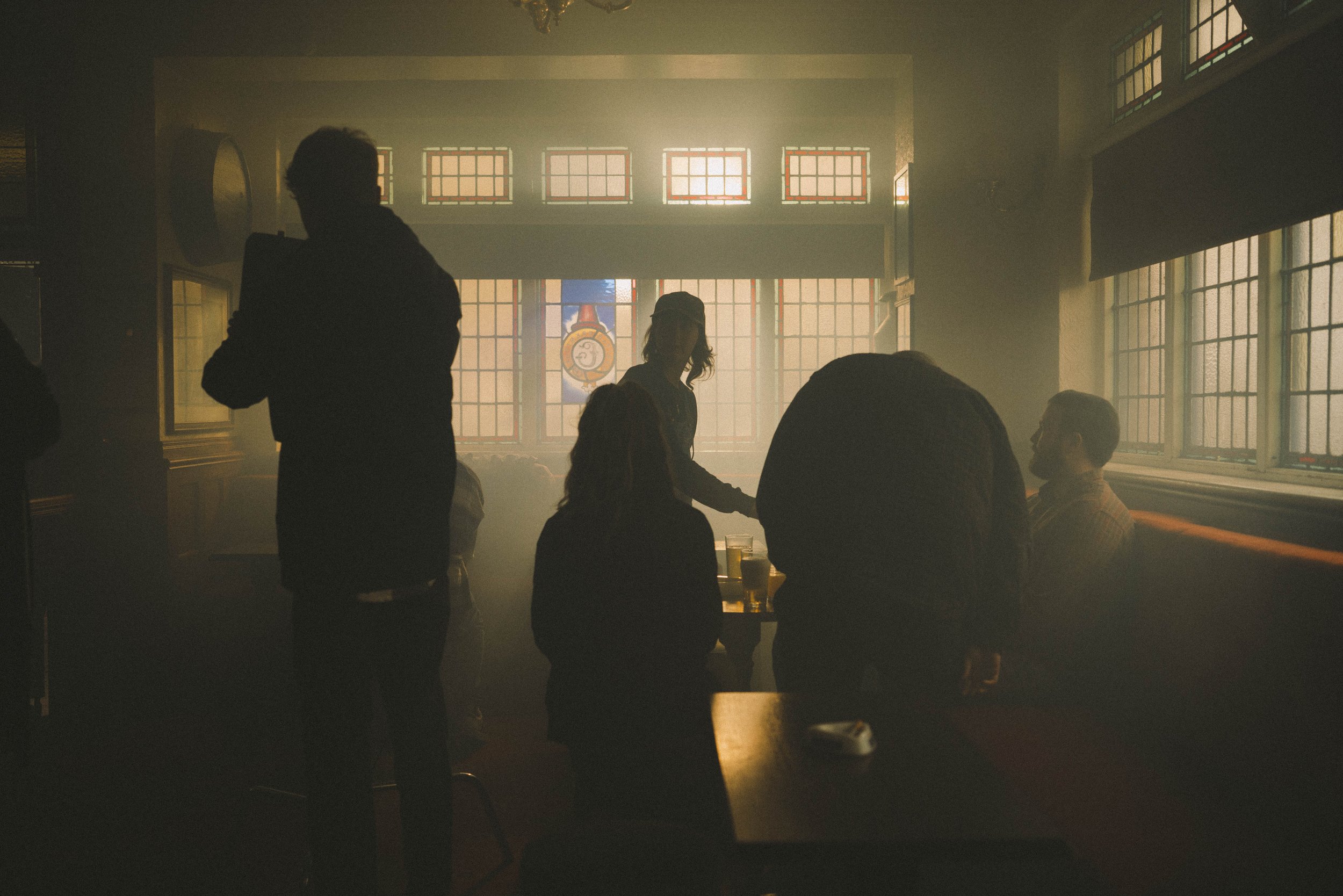
Approaching this story without judgement was crucial…

DIRECTOR’S NOTES
The central theme of the film is about the suffering caused by a toxic relationship with alcohol and the lasting effect it has on those closest to you.
Written by Joe McGucken and based on his personal experience, the screenplay was raw and honest. It was important after many discussions and dissection with Joe, to represent the story in a truthful way, portraying the story from an objective point of view while still conveying the tragic and unsettling situation Sam is in.
Approaching this story without judgement was crucial, especially since it primarily focuses on Sam's story. We aimed for a balanced portrayal where Sam's mother, Leanne, doesn't come across as intentionally hurtful towards her son, but a person struggling with her demons and habitual need for alcohol and the fulfilment it provides her.
There's a shift in narrative when Sam arrives to the pub, revealing that we are witnessing events through his perspective. Despite his mother's selfishness taking priority over Sam's best interest, the underlying love between them is evident. It was essential to convey this in her portrayal, which Lauren Larkin does wonderfully, to ensure the audience empathises with her character on an understanding level.
Creating a film that captures the authenticity of the late 1990s without feeling dated or niche was a priority too. Our creative team of up and coming talent, from our production designer Lily O'Neill, costume designer Ciara Murray and Hair and Make-Up artist Zerica Griffin achieved this with a nuanced and believable approach to their work on the film, giving the world and it’s characters and lived in feel.
Working with Cinematographer James Clarke, our decision to shoot with anamorphic lenses served multiple purposes, allowing Leanne and Sam to share the frame and adding a weighty, almost Western-like feel to their characters within in the harsh conditions and surrounding. The sense of loneliness that’s spread through Leanne's life and those around her impacts Sam, and the wide anamorphic frame amplifies this emotional isolation in various scenes throughout the film, especially as the night unfolds.

